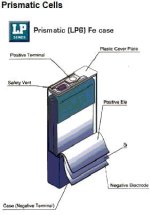Because this forum is **the** canonical source worldwide for high quality, user-sourced thus objective battery information
including for uses other than propulsion.
Not saying allowing those lower-C use cases to interfere with the primary purpose of most discussions (I'm really trying guys)
just to **also** keep them in mind.
Also there are even propulsion use cases where super high density (of either type) is not the highest priority and bigger packs can result in "lower" C-rates like 2-5C say are the norm
cargo bikes, surface vehicle modeling and boats come to mind.
Finally it is useful to isolate out when looking at longevity specifically the usually-deadly effect high C-rate factor, from the more universal factors like QC consistency, chemistry purity, physical build quality etc.
including for uses other than propulsion.
Not saying allowing those lower-C use cases to interfere with the primary purpose of most discussions (I'm really trying guys)
just to **also** keep them in mind.
Also there are even propulsion use cases where super high density (of either type) is not the highest priority and bigger packs can result in "lower" C-rates like 2-5C say are the norm
cargo bikes, surface vehicle modeling and boats come to mind.
Finally it is useful to isolate out when looking at longevity specifically the usually-deadly effect high C-rate factor, from the more universal factors like QC consistency, chemistry purity, physical build quality etc.







